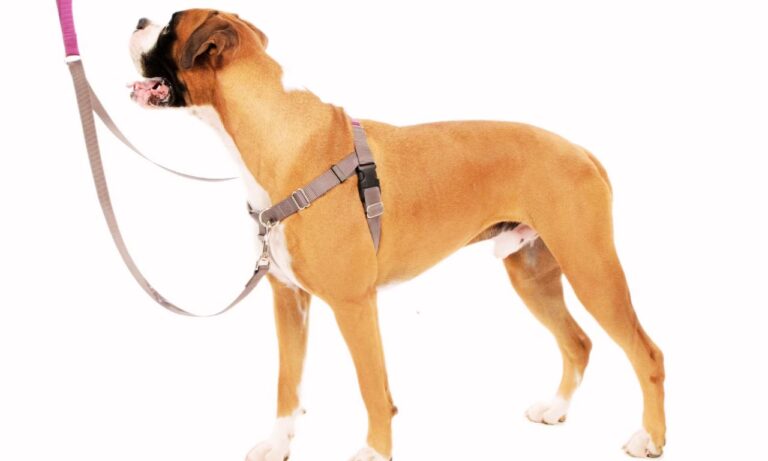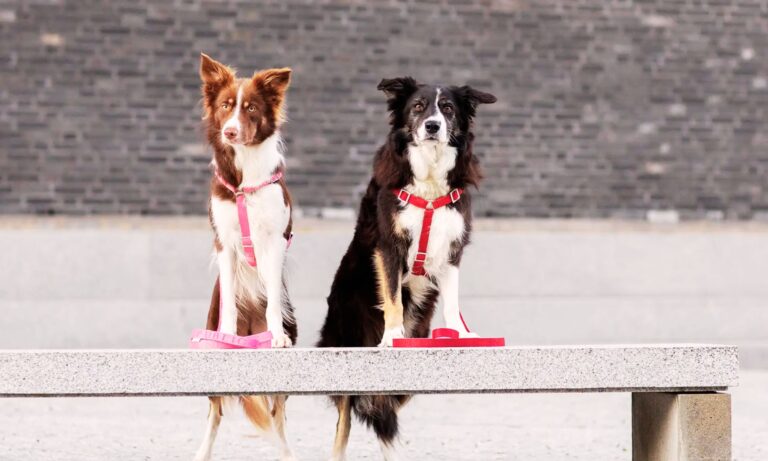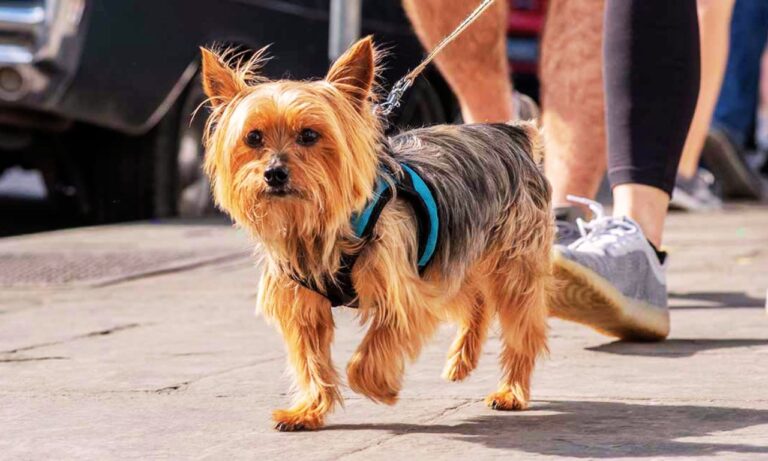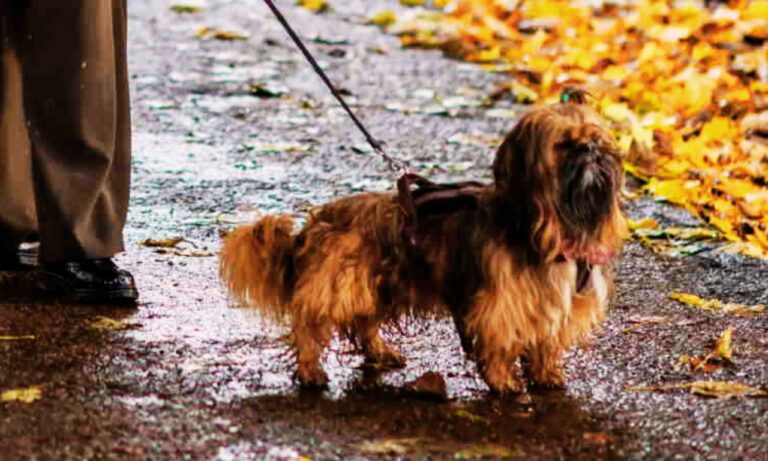| Summary: Rottweilers grow rapidly, reaching 22-27 inches in height and weighing 80-135 lbs as adults. Males are typically 95-135 lbs, while females range from 80-100 lbs. By 6 months, they weigh 50-70 lbs, and full growth is achieved around 18-24 months, with muscle development continuing until age three. |
Rottweilers are one of the world’s most popular working breeds, renowned for their strength, loyalty, and imposing appearance. A clear understanding of their size—from puppyhood to adulthood—is essential for prospective owners, breeders, and enthusiasts alike.
Male Rottweilers typically weigh between 95-135 lbs and stand 24-27 inches tall. GPS dog collars help monitor their activity to maintain a healthy weight.
I will tell you about the Rottweiler size chart, covering standard height and weight ranges, growth milestones, and factors that influence their physical development. With numeric data and in-depth analysis, you’ll gain the insights needed to track and manage your Rottweiler’s growth and well-being.
Blog Highlights
ToggleQuick Fix FAQ Table – Rottweiler Size Chart
| Question | Answer |
| How big do male Rottweilers get? | 24-27 inches, 95-135 lbs. |
| How big do female Rottweilers get? | 22-25 inches, 80-100 lbs. |
| When do Rottweilers stop growing? | Around 18-24 months. |
| How much should a Rottweiler weigh at 6 months? | 50-70 lbs. |
| How long does muscle development continue? | Until about 3 years old. |
Overview of the Rottweiler Breed
Rottweilers are medium-to-large dogs that combine power with agility. Originating as working dogs in Germany, they have been used for herding, guarding, and protection. Today, these intelligent canines are also valued as family pets and competitive show dogs.
With a broad head, strong neck, and muscular body, Rottweilers exude confidence and strength. Their standard measurements are widely referenced in breed clubs and veterinary practices, making a detailed size chart an essential tool for owners.

The recommended size collar for an English Cocker Spaniel usually ranges from 12 to 18 inches, providing a snug and comfortable fit for your dog.
Rottweilers display a range of sizes influenced by genetics, nutrition, exercise, and overall care. Most well-bred Rottweilers fall within specific numeric ranges, yet individual variations exist.
Knowing these benchmarks helps in monitoring healthy growth, adjusting feeding protocols, and planning for training and exercise routines. In this article, we outline the standard sizes and explore the factors that impact these figures.
Standard Height and Weight
According to major kennel clubs, the standard height and weight of Rottweilers are defined by strict breed guidelines. Adult Rottweilers typically stand between 22 and 27 inches (55 to 68 cm) at the shoulder. Males tend to be on the higher end of this range, often reaching 25 to 27 inches, while females are usually slightly smaller, around 22 to 25 inches tall.
When it comes to weight, a healthy adult Rottweiler generally weighs between 95 and 135 pounds (43 to 61 kg). Males usually weigh closer to the upper limit, averaging 110 to 135 pounds, whereas females weigh about 95 to 120 pounds.

Females are slightly smaller, weighing 80-100 lbs and standing 22-25 inches tall. Pet tech products like smart feeding systems aid in portion control.
These numbers are not just statistics; they serve as benchmarks for proper development and overall health. Owners who notice significant deviations from these ranges should consult their veterinarian to rule out any underlying health issues.
Growth Stages and Developmental Milestones
Understanding the growth stages of a Rottweiler is key to interpreting their size chart accurately. Rottweiler puppies grow rapidly, and their dimensions change significantly in the first 18 months of life. The growth phases can be divided as follows:

- Neonatal to 2 Months: At birth, Rottweiler puppies are tiny, typically weighing around 1.5 to 2.5 pounds (0.7 to 1.1 kg). During the first few weeks, their weight may double or triple as they rely on their mother’s milk.
- 2 to 6 Months: Growth accelerates during this period. At 2 months, puppies might weigh between 10 and 15 pounds (4.5 to 6.8 kg), and by 6 months, they can reach 40 to 70 pounds (18 to 32 kg). Height also increases rapidly; many puppies may already measure 12-15 inches at the shoulder by 6 months.
- 6 to 12 Months: The adolescent phase is marked by continued muscle development and increased body mass. By 12 months, most Rottweilers are nearing their full height, with males often approaching 20-22 inches and females around 19-21 inches. Weight continues to rise, with many reaching 70-100 pounds by the end of their first year.
- 12 to 18 Months and Beyond: Rottweilers finish their physical growth between 18 and 24 months. Although height stabilizes, weight can continue to increase as muscle mass develops. Fully mature dogs usually conform to the standard ranges mentioned earlier, with males attaining their full bulk by 18-24 months and females slightly earlier.
Factors Affecting Rottweiler Size
Several factors influence the final size and growth rate of a Rottweiler. Genetics plays a dominant role; puppies from champion bloodlines or parents that exceed the standard measurements are likely to be larger. However, nutrition, exercise, and overall health care are also significant contributors.
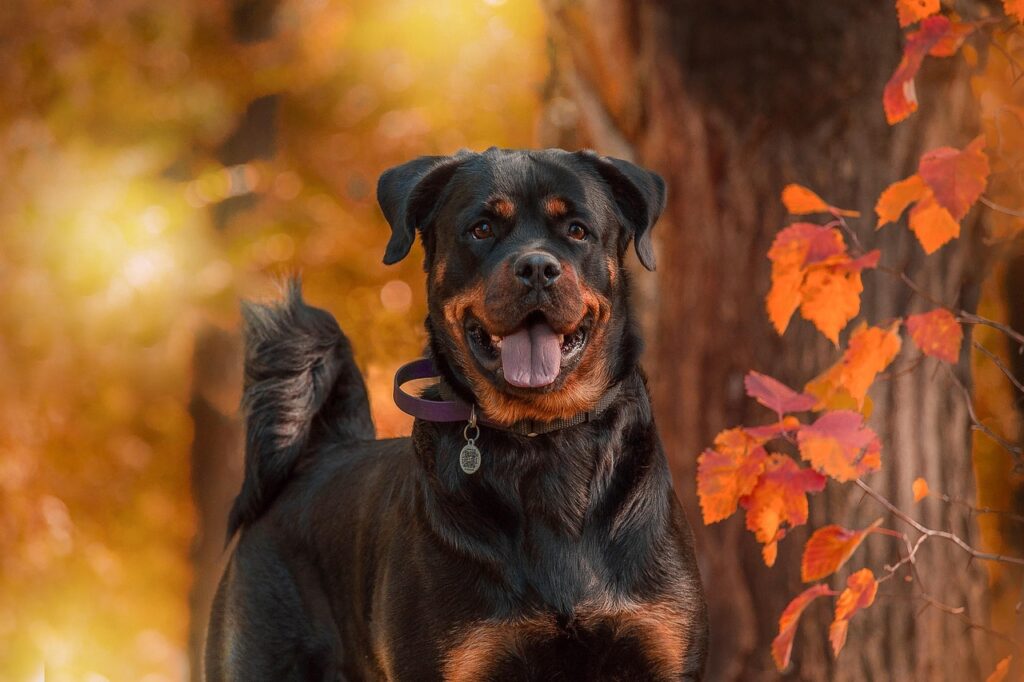
- Nutrition: A balanced diet rich in proteins, fats, and essential vitamins is crucial. For instance, high-quality dog food formulated for large breeds—typically containing around 25-30% protein and 12-15% fat—supports muscle development and healthy growth. Inadequate or poor-quality food can stunt growth or lead to obesity, both of which alter the ideal size.
- Exercise: Regular physical activity not only helps with muscle development but also prevents excessive weight gain. Rottweilers that engage in daily walks (usually 45-60 minutes) and play sessions tend to have leaner, more defined bodies compared to those with sedentary lifestyles.
- Health Care: Routine veterinary care, including vaccinations, deworming, and regular checkups, ensures that any growth-related issues are promptly addressed. Health conditions, such as hip dysplasia, can indirectly affect size by limiting a dog’s mobility and overall muscle development.
Proper diet and exercise are essential to keep a Rottweiler within its healthy weight range. Electronic dog collars can help reinforce exercise routines.
The Importance of a Rottweiler Size Chart
A Rottweiler size chart is more than a set of numbers—it is a tool for monitoring growth and ensuring your dog develops healthily. For breeders and owners, this chart serves multiple purposes:
- Health Monitoring: Tracking height and weight against the chart can help detect abnormalities early. If a puppy is significantly underweight or overweight for its age, this may indicate nutritional imbalances or underlying health conditions.
- Training and Exercise Planning: Understanding the dog’s size at various growth stages aids in designing appropriate training routines and physical activities. A growing Rottweiler might need adjustments in exercise intensity to support healthy development.
- Breeding Decisions: For breeders, a size chart is a reference to evaluate whether a puppy meets breed standards. Consistency in size across litters is crucial for maintaining the quality and reputation of the breed.
- Owner Education: New owners can benefit from knowing what to expect as their puppy grows. Detailed size charts empower them to plan for changes in diet, exercise, and space requirements as the dog matures.
Comparative Size Data
While the standard ranges offer a general guideline, it is also helpful to consider data from various reputable sources such as kennel clubs and veterinary research.
For example, the American Kennel Club (AKC) and other international organizations provide similar measurements, reinforcing the typical adult height of 22-27 inches and weight of 95-135 pounds. However, regional differences may occur due to variations in breeding practices or environmental conditions.
To find the perfect fit, learn more about what size collar for a Bichon, ensuring your dog’s comfort and safety.
In some cases, individual Rottweilers have been documented to exceed these averages. Champion dogs, bred for show or work, might grow to 28 inches in height and weigh over 140 pounds.
Conversely, some pet-quality Rottweilers might be slightly smaller, measuring closer to 20 inches and weighing around 90 pounds. These deviations are natural, and the key is to ensure that any dog, regardless of where it falls on the size chart, maintains a healthy body condition.
Rottweiler Size Chart – A Visual Comparison
Below is an example of a simple comparative size chart that outlines average dimensions at various growth stages:
| Age Range | Height at Shoulder (inches) | Weight (pounds) |
| 0-2 Months | 4-6 | 1.5-2.5 |
| 2-6 Months | 12-15 | 10-40 |
| 6-12 Months | 19-22 | 40-100 |
| 12-18+ Months | 22-27 | 95-135 |
This chart is a guideline and individual growth may vary. Regular measurements and consultations with a veterinarian ensure that your Rottweiler’s development aligns with these benchmarks.
Nutrition and Its Impact on Size
Feeding practices have a direct impact on a Rottweiler’s growth. Studies show that puppies fed a balanced diet tend to reach their genetic potential in size. For large breeds, a high-quality diet typically consists of 25-30% protein, which is essential for muscle development, and 12-15% fat, which provides energy without contributing to obesity.
Monitoring a Rottweiler’s growth stages ensures they develop strong bones and muscles. Dog training equipment supports their physical and mental stimulation needs.
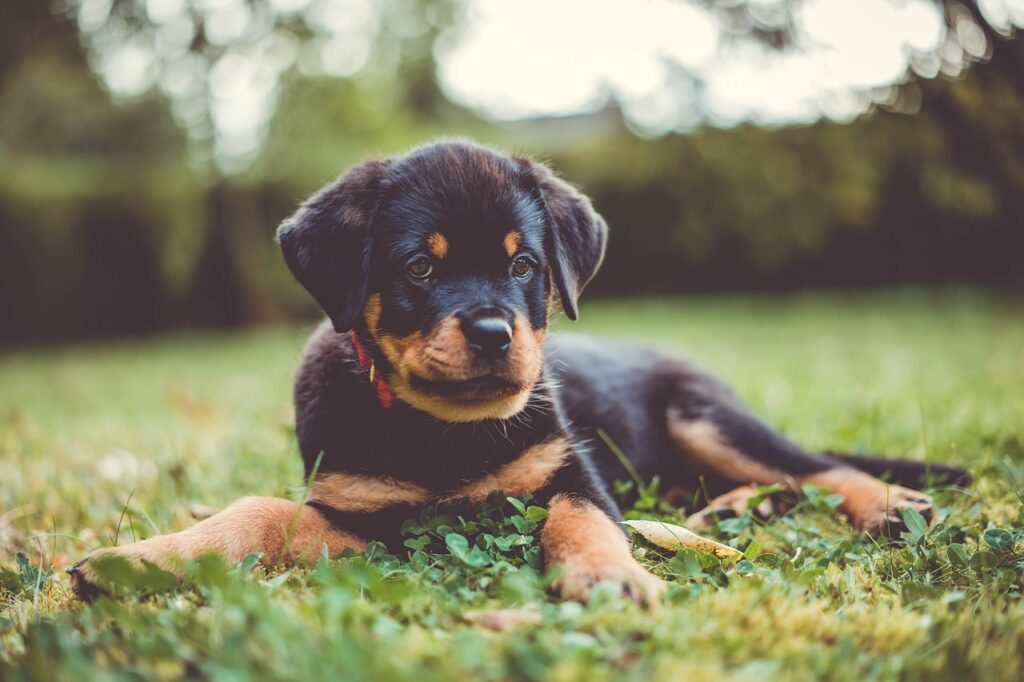
The feeding schedule also plays a significant role. Rottweiler puppies generally benefit from being fed three to four small meals per day until they reach about six months of age. Once they transition into adolescence, two to three meals per day become sufficient.
Adult Rottweilers, depending on their activity level, usually do well with two meals per day. Regular monitoring of weight and body condition can help adjust portions as necessary. A balanced diet, paired with proper exercise, can ensure that the dog grows within the desired ranges of the size chart.
Exercise, Training, and Physical Conditioning
Exercise is another critical component that influences a Rottweiler’s size and overall body condition. Daily physical activity helps ensure that the dog develops a well-muscled body and maintains a healthy weight.
For example, a daily routine might include 45-60 minutes of walking combined with play sessions and strength-building activities like fetch or agility drills. These activities not only enhance muscle tone but also improve cardiovascular health.
Discover the ideal option by exploring what is the best collar material for a Bichon Frise to ensure your pet’s comfort and durability.
Training sessions, which often last 15-20 minutes several times a day, complement physical exercise. A well-exercised Rottweiler is less prone to obesity and related health issues that could distort its size. In addition, consistent training helps manage the breed’s natural strength and energy, ensuring that the dog remains obedient and responsive as it grows.
Factors to Consider for Optimal Growth
Several factors can affect a Rottweiler’s growth trajectory and final size. Genetics, as mentioned earlier, is a primary determinant. Puppies from parents with larger dimensions are more likely to reach the higher end of the size chart.
Environmental factors such as stress, illness, and improper nutrition can also influence growth. Regular veterinary care is essential to catch and correct any deviations from healthy development.
Another important consideration is exercise. Dogs that receive ample physical activity tend to develop lean, muscular bodies. Conversely, a sedentary lifestyle can lead to excess weight, even if the dog’s height remains within standard limits.
Monitoring your dog’s progress through regular measurements and adjusting dietary or exercise routines accordingly is key to ensuring that it remains within the healthy ranges outlined in the size chart.
Health Implications and Body Condition
Maintaining an optimal body condition is crucial for Rottweilers, given their predisposition to joint issues such as hip dysplasia. Overweight dogs can place undue stress on their joints, leading to pain and mobility issues later in life. Therefore, using the size chart as a guideline, owners should aim for a well-defined, muscular appearance rather than excessive bulk.
The ideal size collar for English Springer Spaniel typically ranges from 14 to 20 inches, depending on the dog’s age and neck size, ensuring a comfortable and secure fit.
Veterinarians often use body condition scoring (BCS) systems to evaluate a dog’s weight relative to its frame. A Rottweiler with a BCS of 4 to 5 on a 9-point scale is considered ideal.
Regular checks ensure that the dog is neither too lean nor overweight, allowing for adjustments in diet or exercise if necessary. These evaluations, combined with the size chart benchmarks, offer a complete picture of your dog’s physical health.
Final Thoughts and Practical Applications
The Rottweiler size chart is an invaluable resource for anyone involved with this breed. Whether you’re a breeder, a prospective owner, or a veterinarian, understanding the numerical standards for height and weight can guide decisions in feeding, training, and overall care.
With adult Rottweilers typically measuring 22-27 inches in height and weighing 95-135 pounds, deviations from these numbers can indicate issues that require attention.
For new owners, this guide serves as a roadmap to track growth and ensure healthy development. For breeders, maintaining consistency with size charts helps in preserving breed standards and producing quality dogs. In any case, regular measurement, balanced nutrition, consistent exercise, and routine veterinary care are the cornerstones of ensuring that your Rottweiler grows to its full potential.
By integrating numeric data, growth charts, and practical advice into your daily routine, you can better appreciate and support the natural development of your Rottweiler. Whether you’re preparing for a new puppy or monitoring the growth of an adolescent, this detailed size chart provides clarity and confidence in your care decisions.
Wrapping Up
The Rottweiler size chart not only provides a set of numeric benchmarks but also represents a tool for ensuring the health and well-being of one of the most iconic dog breeds. From the rapid growth of puppies—where even small increments in height and weight matter—to the stable, well-defined size of a mature Rottweiler, every phase of development can be tracked and optimized using these guidelines.
By following a balanced diet, engaging in regular exercise, and monitoring growth through a detailed size chart, owners can help their Rottweilers achieve a robust, healthy body condition.
The American Staffordshire Terrier’s coat type is short, sleek, and easy to maintain with regular brushing.
With the standard ranges of 22-27 inches in height and 95-135 pounds in weight serving as benchmarks, deviations can be quickly identified and addressed through dietary adjustments or increased physical activity. Ultimately, a healthy Rottweiler not only meets these numeric standards but also exhibits agility, strength, and a balanced temperament.


